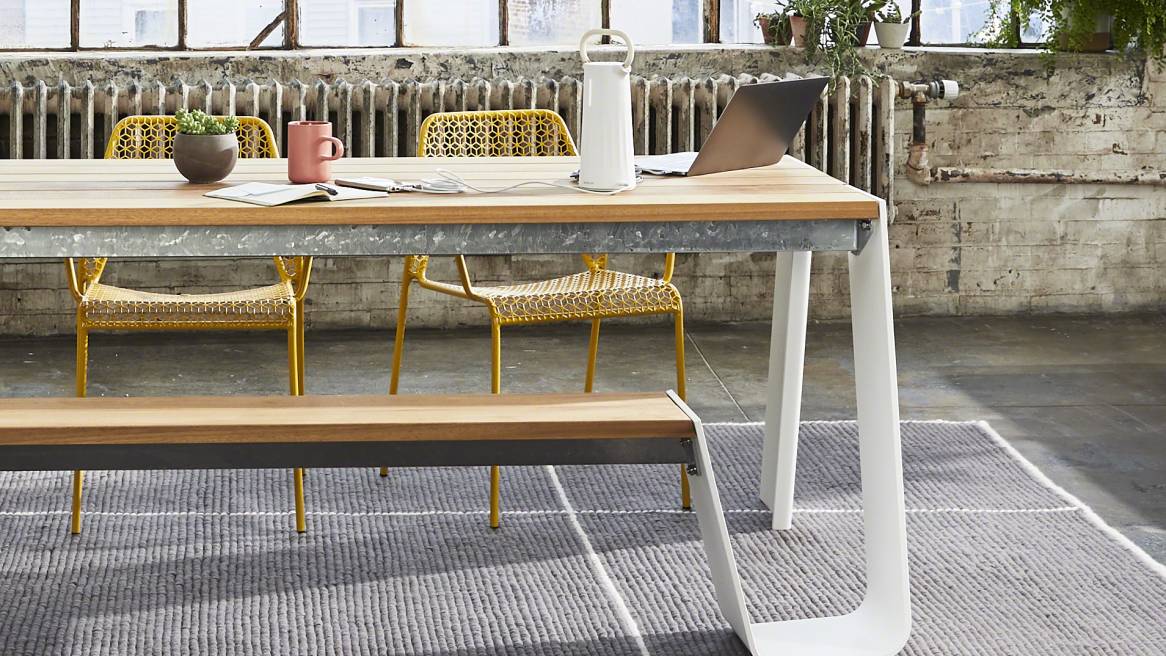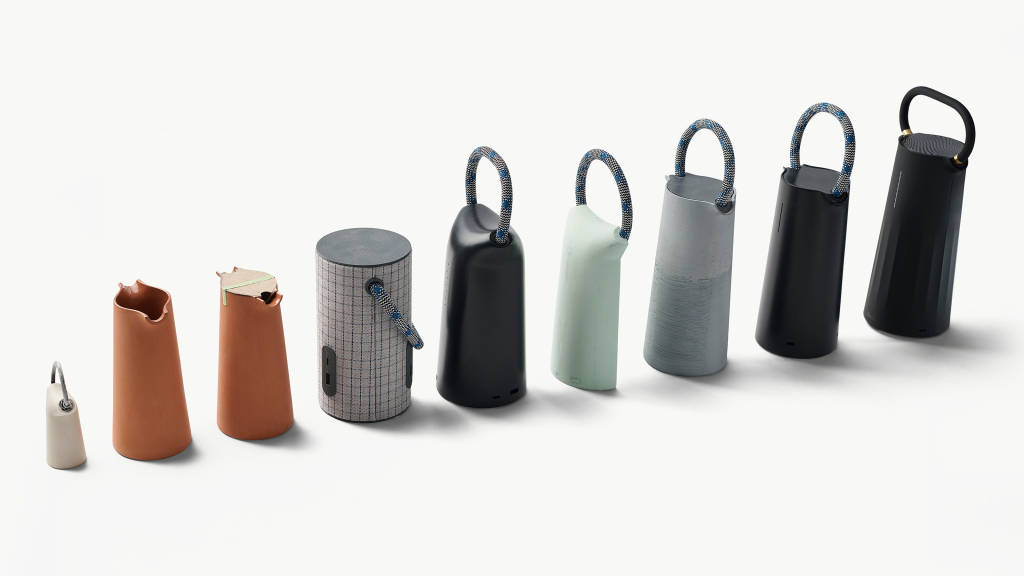Work Untethered
Flexibility, mobility, choice and comfort are expectations of today’s workforce. Informal, casual meeting nooks, cafés, lounges and outdoor spaces continue to dislodge traditional work environments such as benches and workstations, as more and more employers recognize that inspiring work environments attract top performers and fuel creativity and innovation.
There’s just one problem: We left the power that everyone needs for their technology, stuck in walls and floor boxes. So, people and teams – one by one and at the most inopportune times – are either forced to find another place to work to recharge their devices, or remain stuck without a working device. Even with longer battery life on many devices, people tend to wait until their battery runs low before thinking about where to recharge. Workflow is disrupted and people grow increasingly frustrated.
But what if the future of power is mobile? What if it could easily move wherever people want to be?
“People don’t want to sit along the perimeter of a room where outlets happen to be,” says Bo Anderson, Steelcase product manager for computer support and power. “We are more collaborative than ever before, and we simply won’t tolerate being tied down by building infrastructure. Teams and individuals need the freedom to work in a range of spaces, but access to power limits where they can go and prevents teams from getting their work done.”
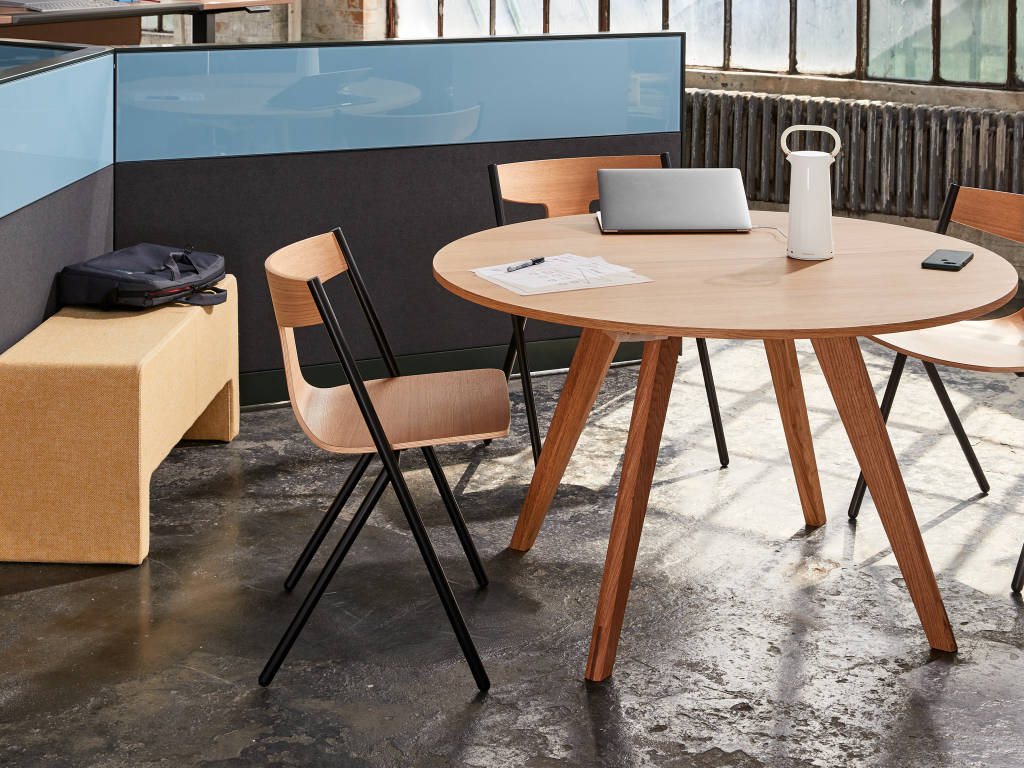
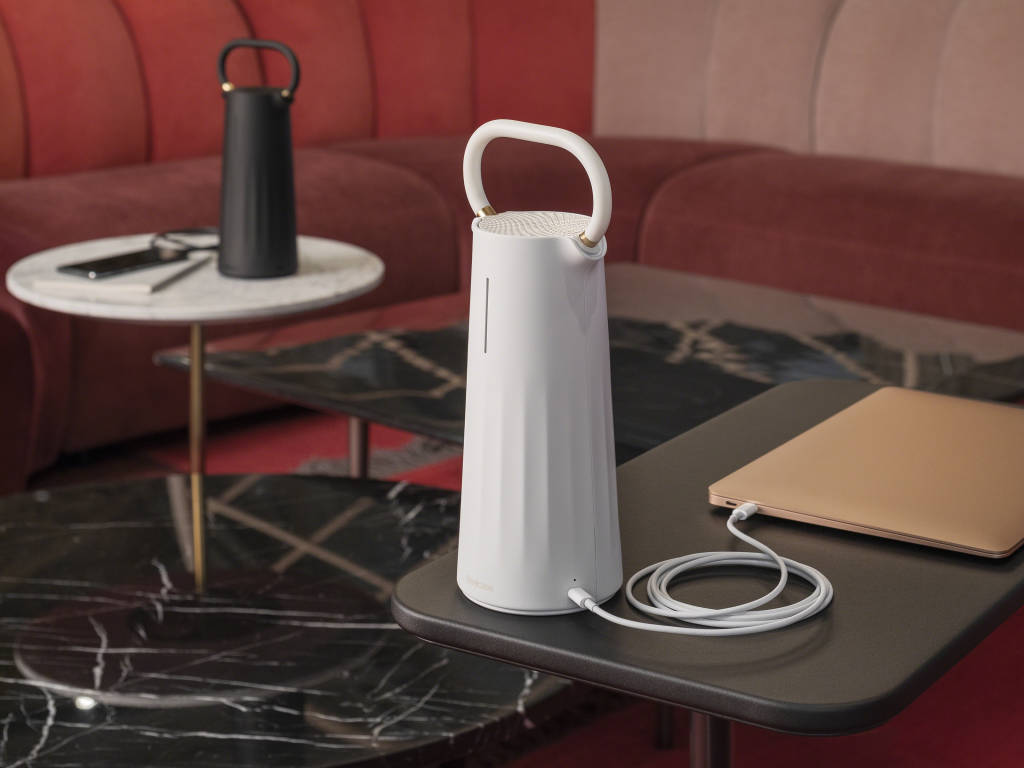
This insight became the genesis of Steelcase Flex Mobile Power. Steelcase partnered with Anker, a global leader in charging technology, to create Flex Mobile Power and its proprietary home docking station to bring enterprise-level mobile power to the workplace. “We saw that people want to move their furniture more often, based on the type of work their team is doing. They’re also spending more time than ever in group work, and so we wanted to accommodate multiple users and democratize power distribution – that is, reroute power to the devices that needed it the most,” Anderson explains. “And we had to figure out a way for people to take power with them throughout the day, wherever they wanted to be, without the tangle of cables and cords that ties them down.”
Each Steelcase Flex Mobile Power unit charges multiple devices simultaneously, detecting which device is running on the lowest power and directing the most energy there, so all team members can keep working.
Our latest What Workers Want podcast shares the unlikely story of how Steelcase and Anker came together to create Steelcase Flex Mobile Power.
Another insight: “Just as battery life is getting longer, devices are getting smaller and thinner, with more laptop manufacturers standardizing on the USB Type-C connector. USB-C allows a great deal of power through a very thin connector. “We have more devices, we have lower wattage requirements. We designed Flex Mobile Power very intentionally with three USB-C ports and one USB-A port, no outlet.
Unlike USB-A ports, which will top out at between 12 to 15 watts in the best-case scenario, a USB-C device has smarts in it. “It has the intelligence to do a handshake between the device and the charger to safely provide the appropriate amount of power.” The same USB-C port can charge a phone at 10 to 15 watts, says Anderson, but if that USB-C port has enough power behind it, it can charge a laptop up to 100 watts. And it negotiates along that path to be able to provide the right amount of power at the right time for any device plugged into it.
The first of its kind enterprise-level, high-capacity mobile power solution allows workplaces to become more fluid and for teams to work wherever they need to.
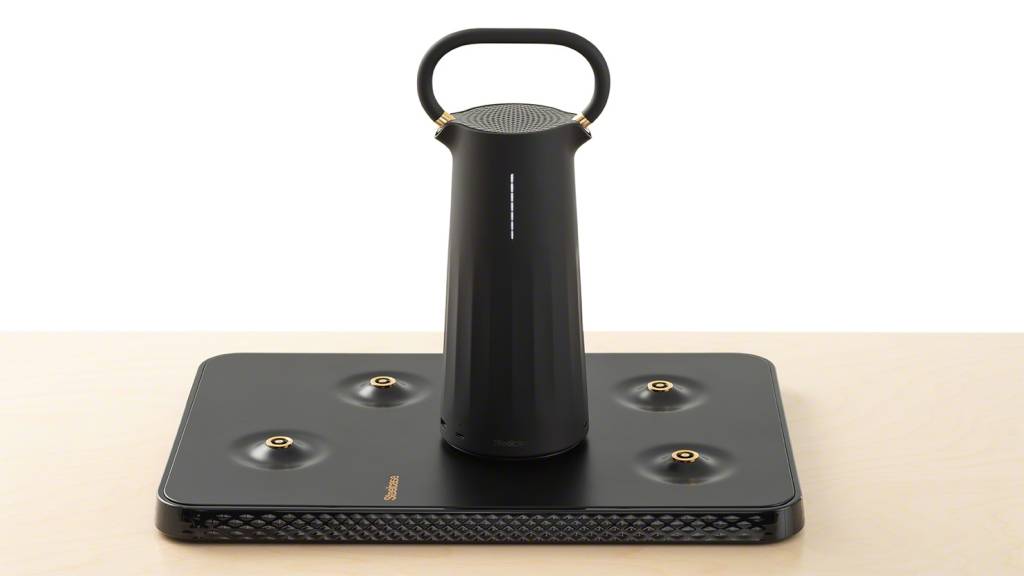
Work untethered. Get to know the product bringing true mobility to today’s workplace.
The first of its kind enterprise-level, high-capacity mobile power solution allows workplaces to become more fluid and for teams to work wherever they need to. “Steelcase Flex Mobile Power can power three MacBook Pros from dead to full – that’s how powerful it is,” Anderson says. “And our charging system can recharge five units in less than eight hours. Both are optimized for the workday. I think this is a great example of how our development team can innovate around a true customer need and create something truly distinctive.”
Steelcase Flex Mobile Power brings true mobility to the workplace. It’s easy to grab, go and get things done. Still, it’s a first step, says Anderson. “The new planning paradigm has to allow for new types of spaces, untethered to the power grid and easily changed. As technology develops and we see changes in how devices and products get along, we’ll be presented with more interesting opportunities for mobile power.”
Unexpected artistry
“Simple, delicate, with a sense of poetry” is how Steelcase industrial designer Hyun Yoo describes the ceramic vessels she began slip casting several years ago as a way to rediscover her artistic voice outside of work and explore new shapes and materials.
She never imagined her artistic explorations would become the inspiration for a mobile power solution. We asked Yoo a few questions about the project and her creative process.
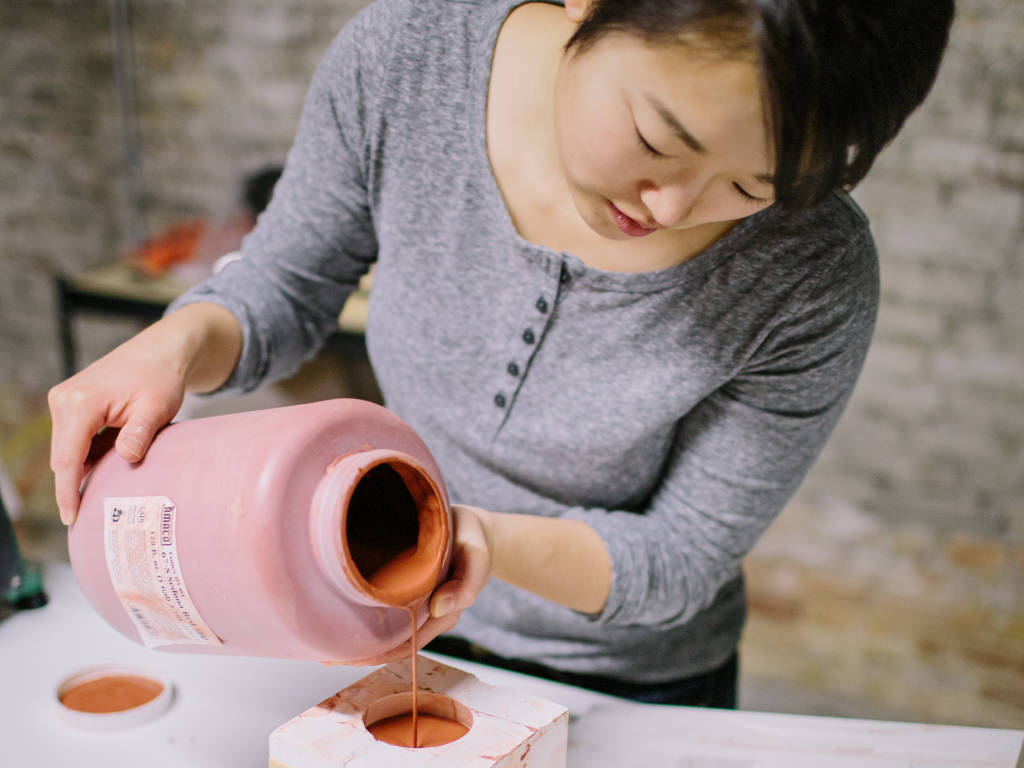
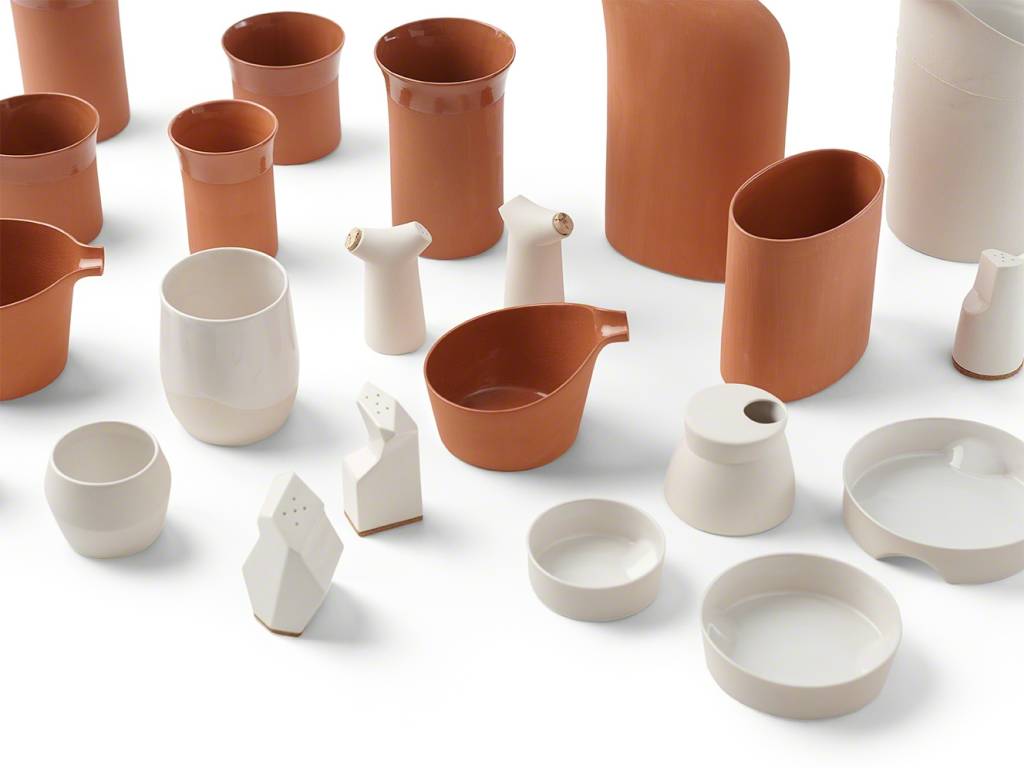
360: How did your personal work in ceramics intersect with this project?
Hyun Yoo: My colleagues had seen some of my ceramicware and admired it. My aim is to create objects that are simple and delicate in line but scaled and proportioned to feel sturdy. I applied the same principles to Flex Mobile Power. It was incredibly gratifying to be able to address the design constraints of architects and engineers while also creating a device that gives people more control over how they work.
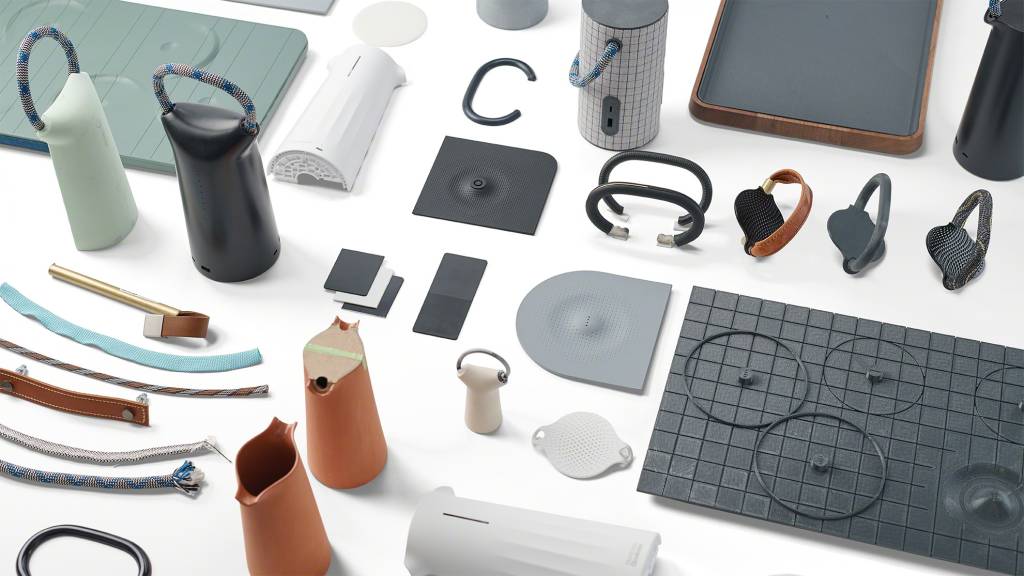
360: We hear you were sold on the idea of mobile power before this project even started?
HY: I was working on a design project in Munich, consolidating our offices and groups of people into a multifunctional workspace and showroom. With the changing landscape and nature of construction, we really struggled to find a place where we could collaborate and get power where we wanted. It became difficult and expensive and was extremely frustrating.
360: What kind of parameters were established for the Mobile Power project at the outset?
HY: The shape had to allow a person to easily carry the device through doors, ideally in one hand while also carrying a laptop and a cup of coffee. But it also had to be large enough to hold enough power to allow a person or small team to get through the day without having to recharge. We wanted to create something people would be attracted to. But we didn’t want it so distinct that if you saw many of them in the office they would become a distraction. In the end, I think we achieved a sophisticated appearance … a soft and silky finish … and a certain tactility with the added embossed pattern. We thought the handle should maintain its pill shape when resting but respond slightly to the user when picked up.
360: Were there any stumbling points along the way?
HY: The size of the unit and conduit rings increased over the life of the project, but we embraced each new requirement. Rather than try to hide the large rings, we decided to treat them as elegant brass touchpoints in the design. The home tray – where the units are stored and recharged when not in use – evolved in a lovely way, too. Thinking about the unit as tableware inspired a truly elegant and distinctive product.
Before joining Steelcase in 2006, Hyun Yoo studied art and furniture design at UCLA (B.A.), the Rhode Island School of Design (M.F.A.), and the slightly less conventional Northwest School of Wooden Boat Building in Port Hadlock, Washington – where she learned, among other things, how to confidently eyeball a “fair curve.”

